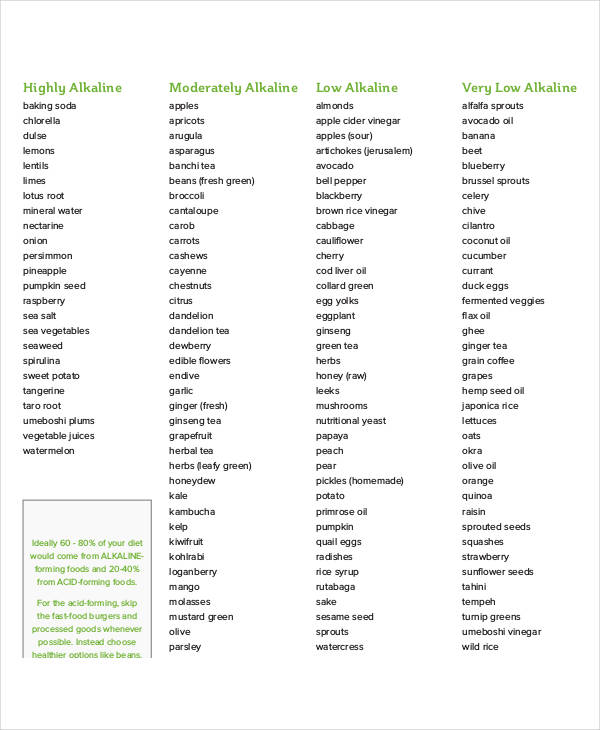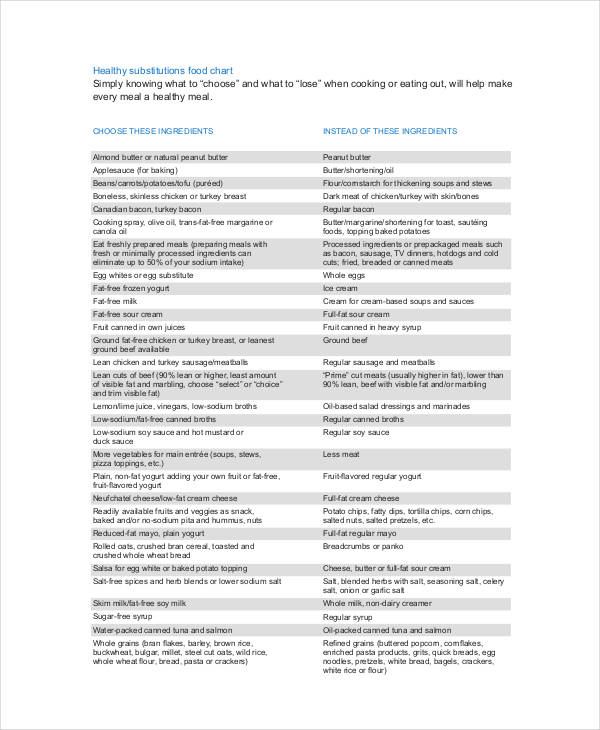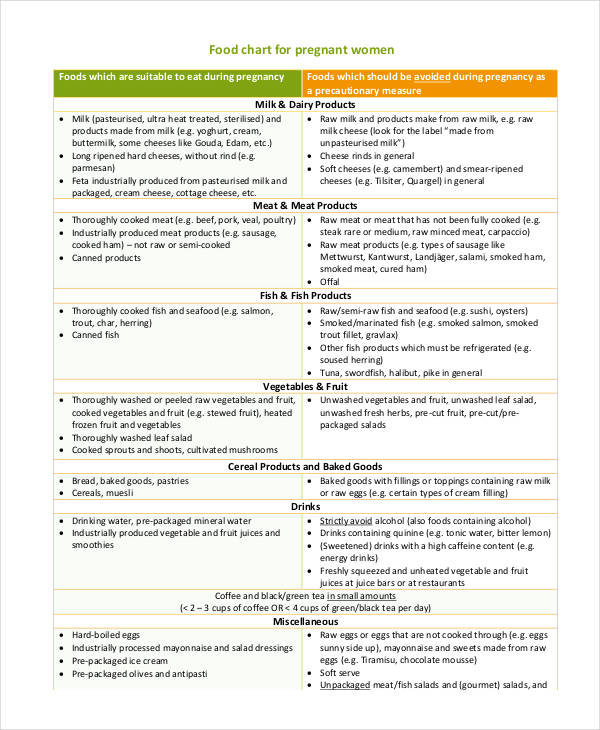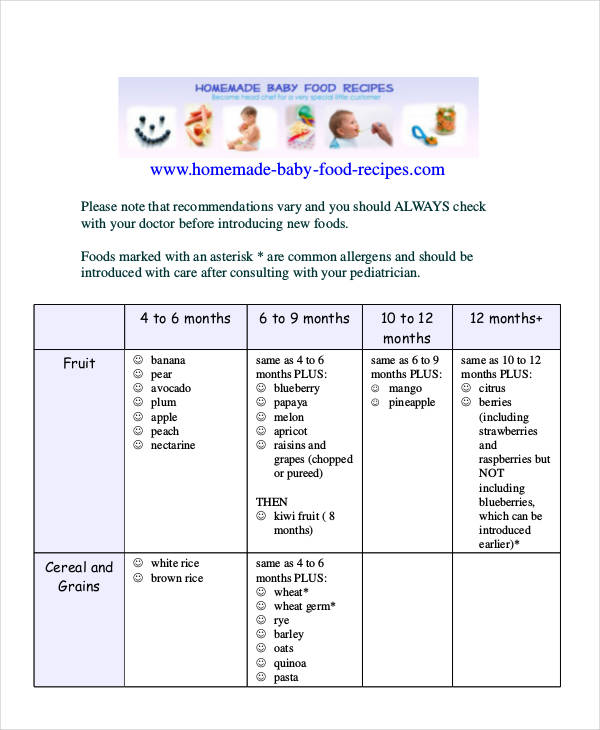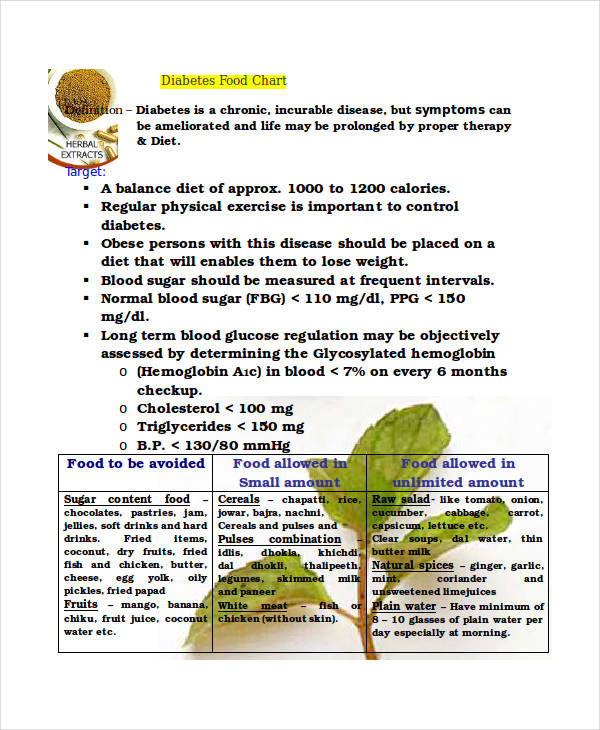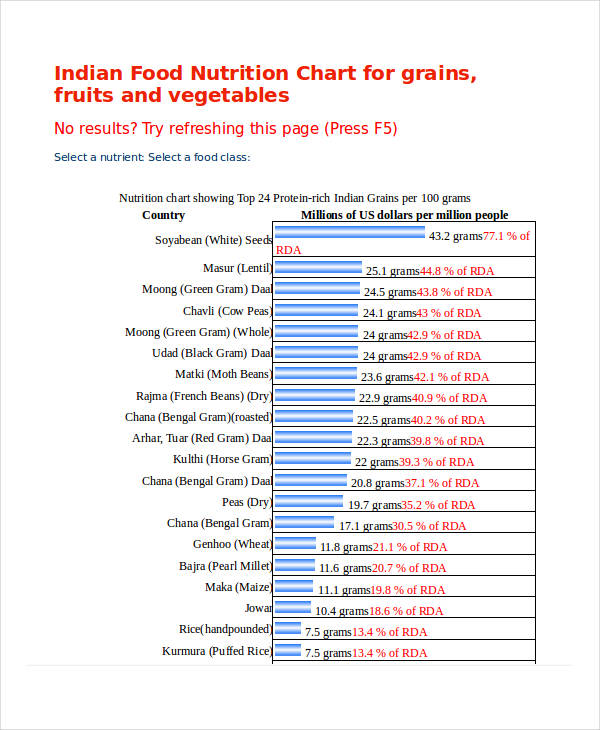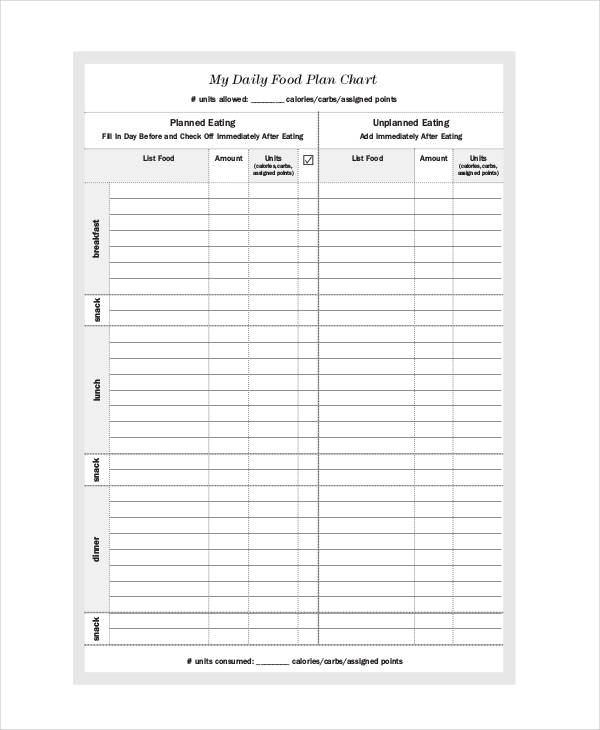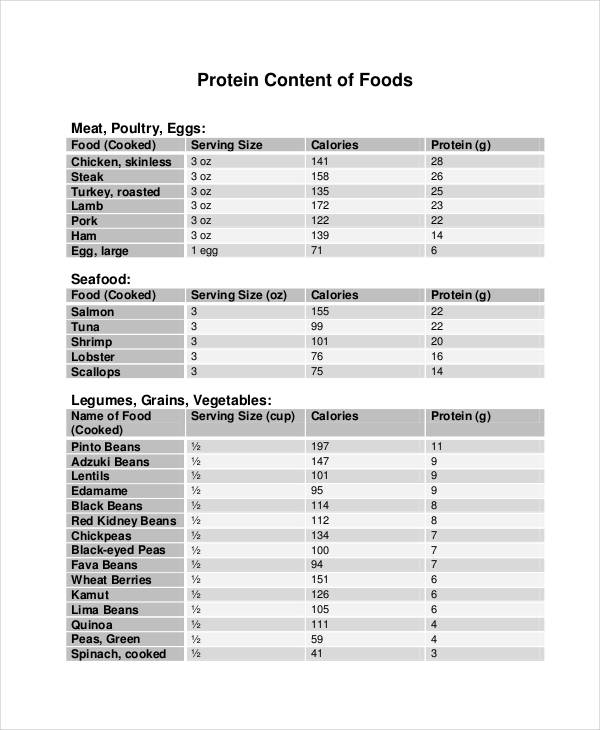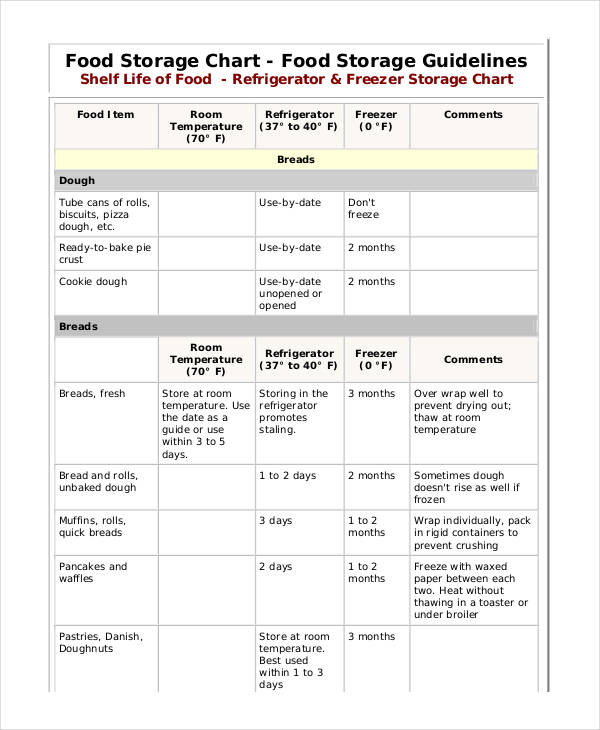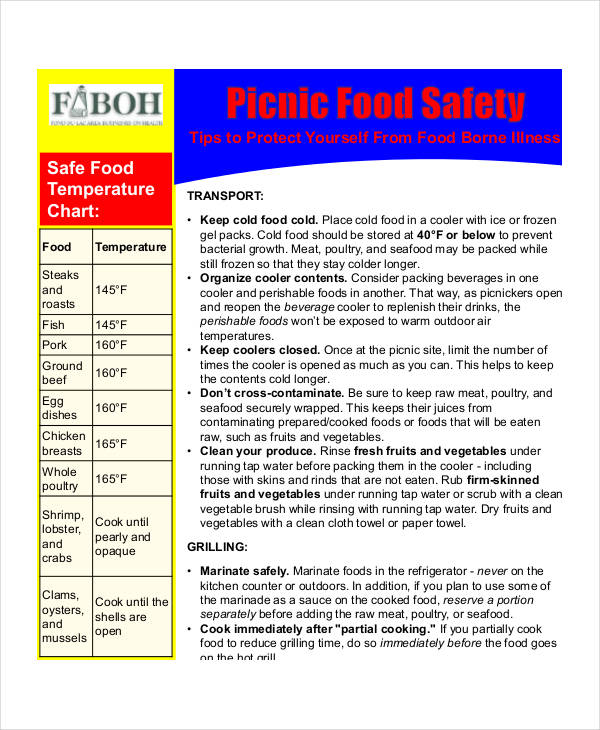11+ Food Chart Examples to Download
A chart is a detailed presentation of information using symbols such as lines, bars, images, etc. A flow chart or a bar graph, for example, is a chart which typically uses rectangular bars of different lengths in presenting information about something.
In business, a chart is a visual representation of various things such as prices of goods/services over time, organizational structure, income over time, etc. Few of the most commonly used types of charts are bar charts, pie charts, and line charts.
Blood Type Food Chart
Food Combining
Alkaline Food Chart
Healthy Food Chart
Pregnancy Food
What Is a Food Chart?
A food chart, in the simplest sense, is a chart representing a list of food or food groups typically devised in order to provide information on the food that the human body needs to consume on a regular basis to have a healthy and balanced diet.
Food diet charts usually include pictures or diagrams of food along with their names and descriptions. The food pyramid that we’re all familiar of is a nutritional chart in a triangle or pyramid form basically designed to promote a balanced intake of food nutrients.
Importance of a Food Chart
People are getting more concerned about their health by the day.
With all the stress-inducing things surrounding, we need to at least do something to keep ourselves healthy. Then people discovered the power of eating healthy in restoring the nutrients we constantly lose in doing our daily activities.
Luckily, food charts guide us into eating healthy and having a healthy lifestyle. Examples of charts that help you eat healthy are those that indicate the amount of food to take, how your ideal plate of food should look like, what food to include in your meal, etc.
Baby Food Chart
Diabetes Food
Nutrition Food
Daily Food Chart
Protein Food
Food Storage Chart
Food Temperature
Tips to Follow for Your Baby’s Food Chart
Babies grow fast and the process alone consumes a lot of energy and nutrients. This is why parents need to ensure that their babies get the essential nutrients they need through the food they eat. Here are tips you need to remember while following your baby’s food chart:
- Introducing new food is tricky. You don’t know what food your baby might be allergic to and he/she might find it hard to digest new food. So do this process slowly to let your baby’s body adjust with the new things you introduce.
- Solid food are hard to digest so be extra careful in feeding these to your baby. Wash fruits and vegetables properly. Cook meals properly, and if possible, avoid adding flavoring such as sugar, salt, or pepper (especially MSG).
- Introduce a variety of food choices. Do not remove nutrients you think are not healthy. This includes fat and cholesterol. Fat and cholesterol are essential nutrients in the development process of body areas (including the brain and nervous system).
- Avoid unhealthy food, junk foods, food with too much sugar, fried foods, uncooked and overcooked foods, and processed goods, nuts and seeds (and other hard fruits and vegetables), etc. Avoid cow’s milk, as well–it does not contain as much nutrients as breast milk.
- You need to teach your babies feeding practices starting from the simplest ones like learning to hold his/her own bottle (or cup) and spoon, or eat/drink while sitting down.





